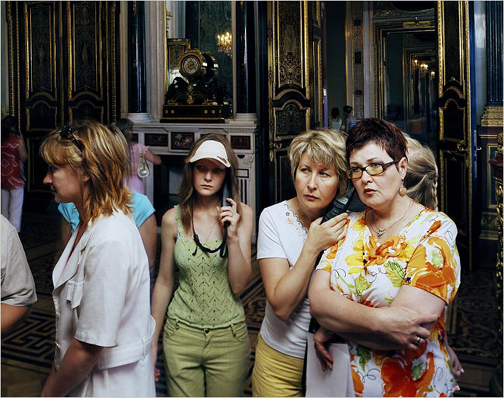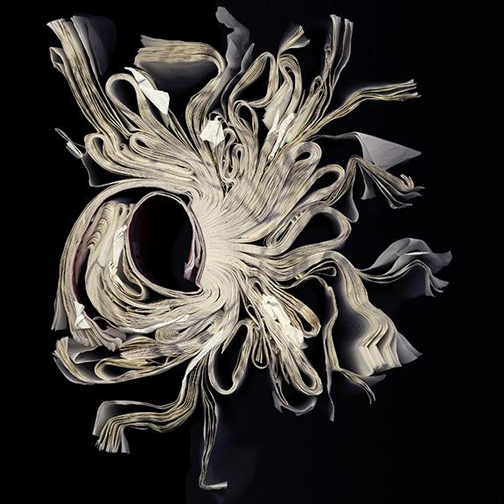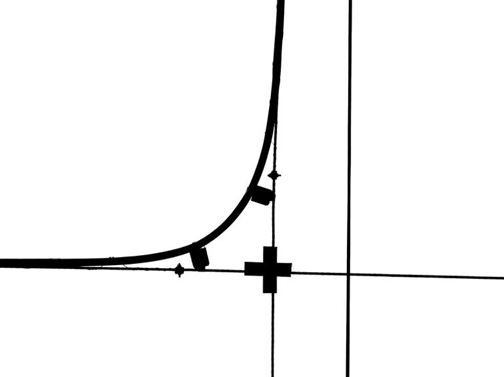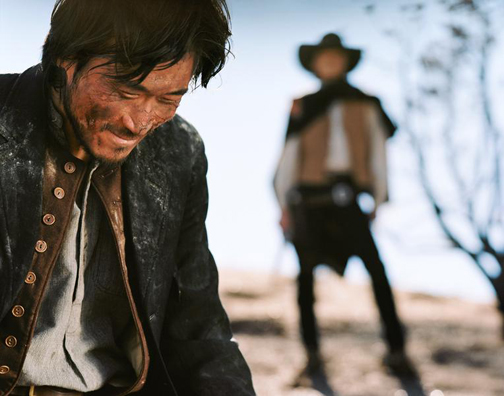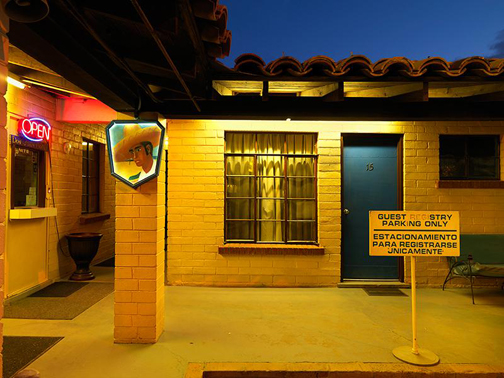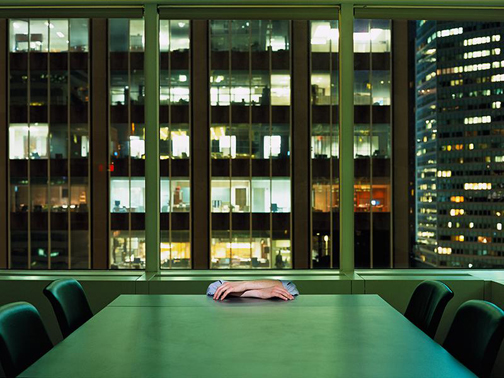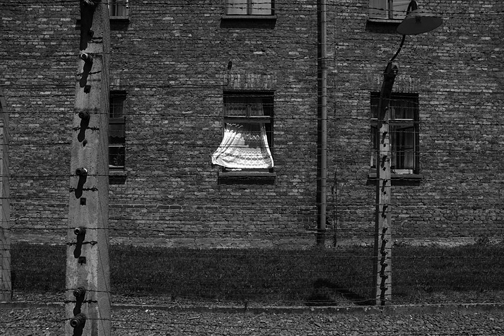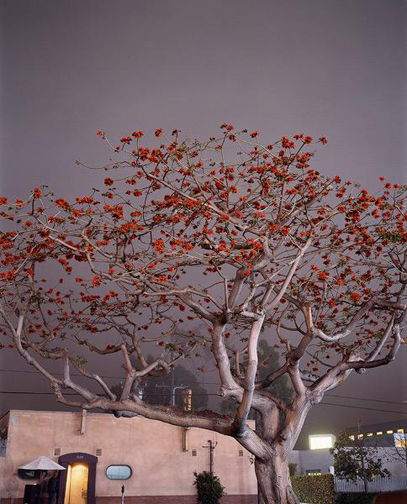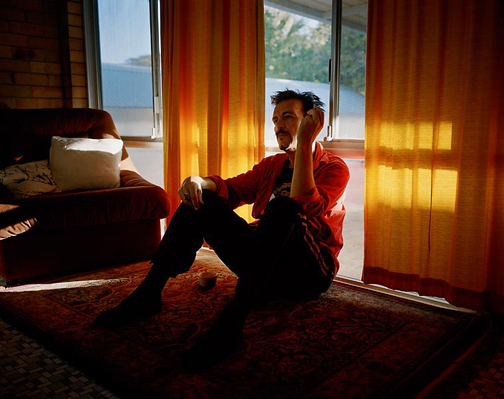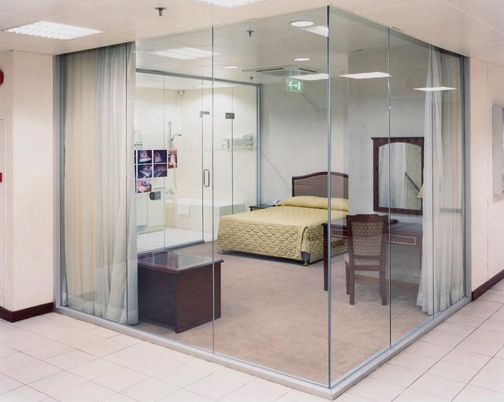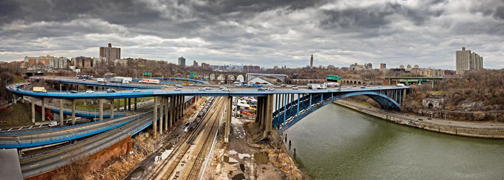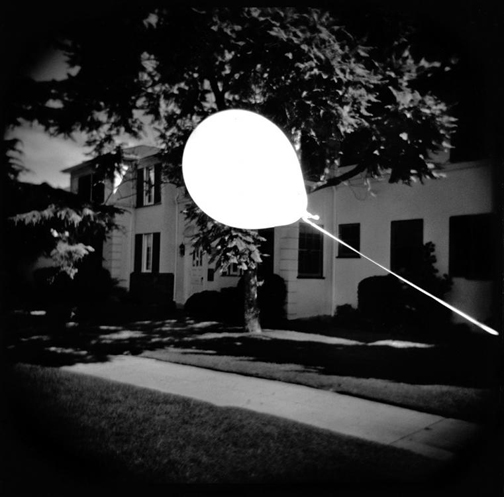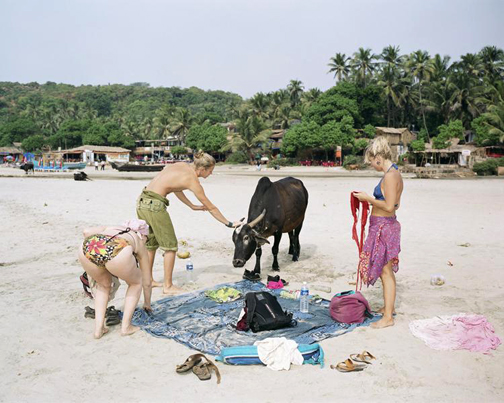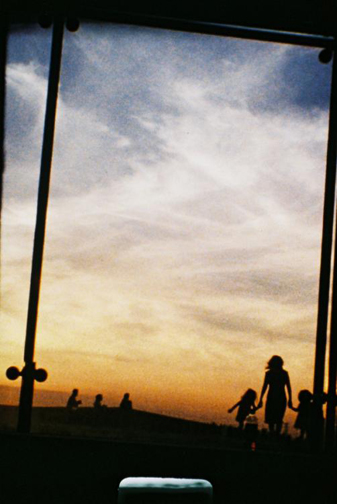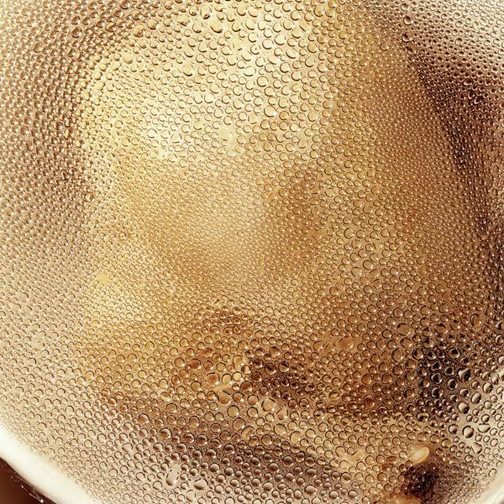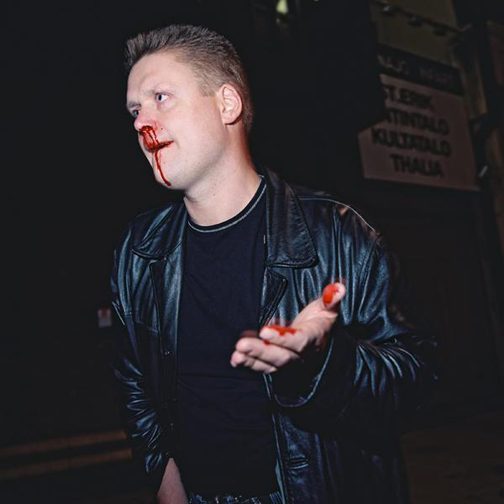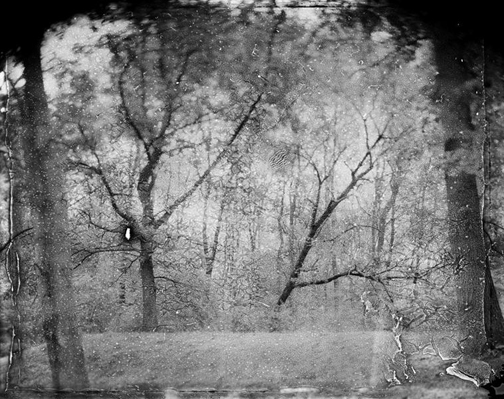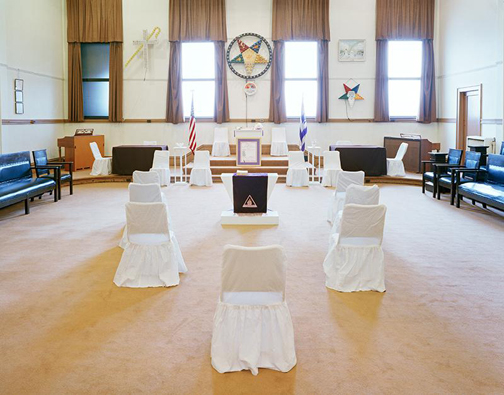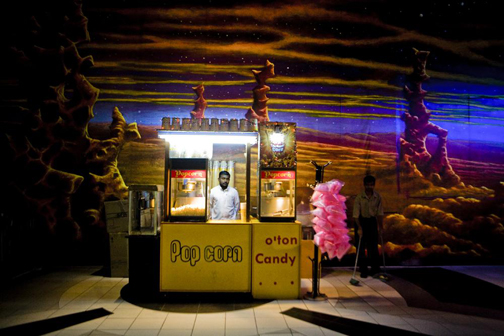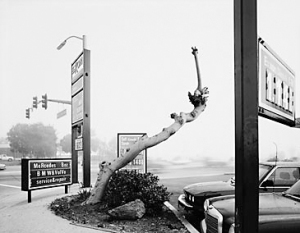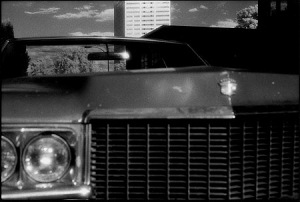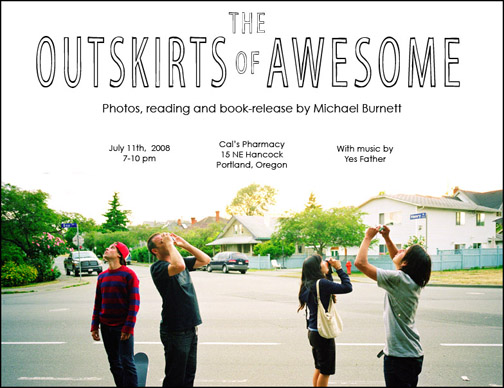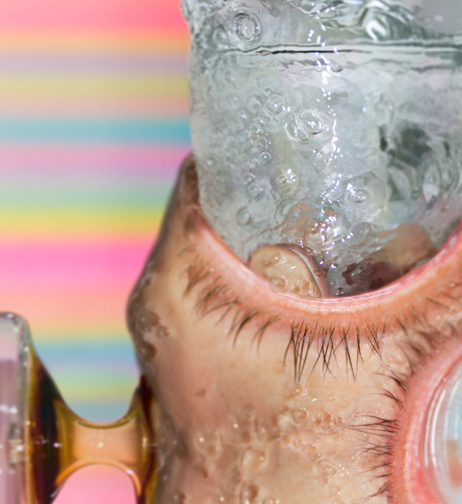
Daniel Barron, “A Numb Hinge, #55,” digital c-print, 2008
A relentlessly cheerful treatise on grotesque post-human fantasies, Daniel Barron’s A Numb Hinge is one of the most provocative, sly, arresting, and sensual photography shows I’ve seen in Portland. In a remarkably conservative photography climate (local and national) that continues to favor “straight” photography (in color and with a 4×5, please), Barron’s abstract, digitally-assisted creations of fleshy pink cavities, wet eyelids, broken blood vessels, and bubbly glycerin tubes push the medium toward new aesthetic and technological territories.
The statement that accompanies A Numb Hinge indicates that technology is at the fore of Barron’s artistic concerns. But his interest isn’t in Photoshop’s ability to create fantasies that look, by all measure, strictly photographic, as his do. (I am not privy to how the images in A Numb Hinge were made, nor do I think it’s a particularly relevant question.) The artist is interested in the unemotional nature of scientific advance; how the beneficial effects of penicillin on bacterial infections and the destructive reactions of nuclear fission are, in and of themselves, entirely impersonal. Technology, by this way of thinking, can be seen as “an emotionally unresponsive, indifferent device on which subsequent events depend”—e.g., a “numb hinge,” which, unscrambled, reveals itself as “human being.”
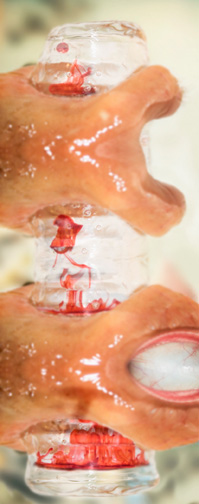
Daniel Barron, “A Numb Hinge, #57,” digital c-print, 2008
Rarely, however, has cyborgian impassivity been so fun: If the soulless detachment of a post-human future has typically been imagined as fatalistic outcome, whether by Phillip K. Dick or Aziz + Cucher, Barron takes a different tact. A Numb Hinge envisions our fleshy future, in which bloodshot eyeballs occupy meaty knuckle sockets, as a consumerist idyll-a technological advance that can be beautified, photographed, and marketed like a Prada handbag.
“A Numb Hinge #55” exemplifies Barron’s gleeful, pop aesthetic approach to these quasi-scientific, disquietingly graphic subjects. With unflinching verisimilitude, “#55” depicts a fleshy object of Barron’s photo-digital creation: A human eyelid (though not attached to any larger skull), opens itself to accommodate a shimmering tube of ice, which slides into the orifice almost pornographically. (Pubic hair, however, has been replaced here by dew-y eyelashes, which are photographed with immaculate clarity.) The eye-socket aperture is presented as a cropped fragment of a larger whole that we can’t discern, although one can see that another similar eyehole exists at an unnatural 90 degree angle to the first, like a fleshy, pink, elbow joint. An un-readable attachment protrudes from the left side of the object, connected either by a honey-colored resin or a natural sap. “#55” is a speculative vision of mad science at play-the human body as a purely mechanical system that can be genetically and physically adapted to accommodate oblique, inhuman purposes.

Daniel Barron, “A Numb Hinge, #52,” digital c-print, 2008
It’s not the subject matter that makes “#55” so remarkable, however: It’s Barron’s treatment and presentation of the material. If and when the artist’s vision of all-out post-human anatomical modification is realized, we can be sure that the idea will be sold to us (subconsciously) as a technological advance capable of ensuring that we (a) never have to die, and (b) have a good shot at getting laid. The skin in “#55,” as in all of the pieces in A Numb Hinge, is flawlessly nubile—pink, blemish-free, unwrinkled flesh that evidently repels water so that it beads up and cascades off, like a Man Ray teardrop or an opaquely shellacked D’Anjou pear, coated in a light mist of water before the catalog photographer shoots it. Whatever they may graphically depict, the real messages of A Numb Hinge‘s body parts are “sex” and “youth.” If the throbbing penetration of the wet tube into the tight, slippery opening of “#55” was too subtle for audiences, the small protrusion of a lapping, curved flesh-mound attends to the base of the shaft like a tiny tongue. (The bubbly, icy tube, all the while, looks like the sum manifestation of Wilson Bryan Key‘s hysteria about subliminal images erections and skulls allegedly being airbrushed into beverage advertisements in the 1970s.) If any doubt should linger about Barron’s advertorial approach, “#55’s” background of hazy, candy-colored stripes promises a bright, carefree future that carries the aesthetic hopes of both psychedelic transcendence and an afternoon of retail therapy at the mall.

Daniel Barron, “A Numb Hinge, #52,” digital c-print, 2008
These strategies recur throughout A Numb Hinge. “#52” shows the “head” of a meaty flesh-worm, whose slippery surface is closer to the lining inside your mouth than the flesh on your palms. The center of the slimy, pink tube nestles a strange, flecked, yellow and green ball that could be both a citrus rind and a diseased eyeball. Repulsive on one hand, the form’s oozy tactility begs to be poked and fingered. In the background, we can make out slightly unfocused, similar forms, included in the photograph as if to assure viewers that scarcity is no issue, and that there’s enough for everybody, including you. As with many of Barron’s pieces, there is a large portion of the composition left mostly blank, which good editorial and commercial photographers know, is always appreciated by picture editors and art directors who need a spot to include the sales pitch.
Formally and technically, Barron’s attention to detail is meticulous. When one of his watery, glycerin tubes penetrates a bodily orifice, the tonal reflections of the skin are rendered in the bubbly with impeccable, rippley precision. These images withstand the closest scrutiny, and never betray their digital seams or in-camera trickery. The photographs’ uncanny realism is responsible for the squeamish response they invoke, but it’s the artists’ use of ultrasoft lighting and tender chromatics that make the images in A Numb Hinge so undeniably seductive. Barron’s beauty is of the repulsive variety, and he’s adept at teasing out the carnal elements of grotesquerie. These fantastic subjects may indeed be numb to the banalities of their own applications, but Barron is too deftly attuned to our propensity for novelty and our evolutionary mechanisms of desire to allow us to remain unmoved by the numb hinge of progress.
A Numb Hinge is on view at Pushdot Studio, 1021 SE Caruthers, Mon-Fri, through July 25.
Daniel Barron dot com
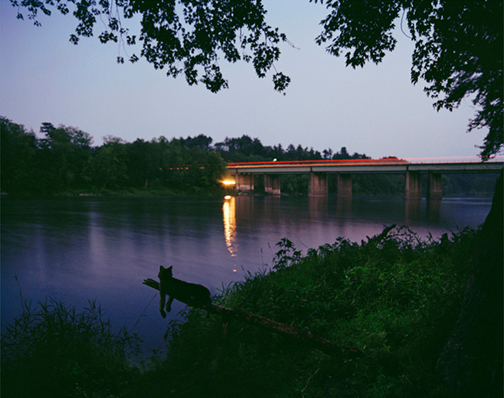 Amy Stein, “Riverside,” from the series Domesticated, digital C print
Amy Stein, “Riverside,” from the series Domesticated, digital C print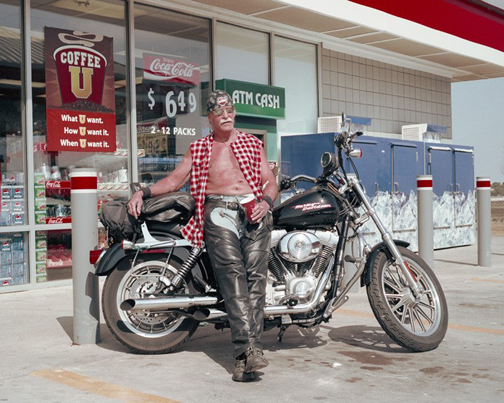
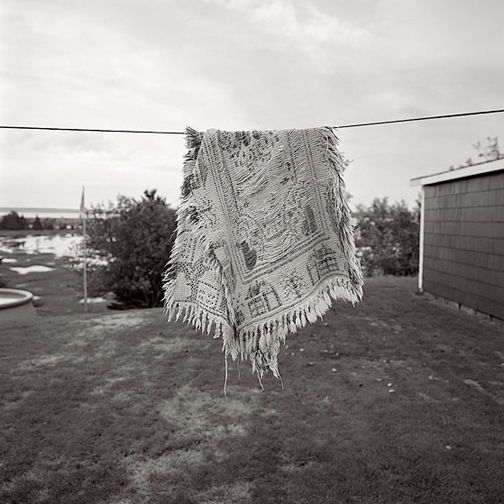
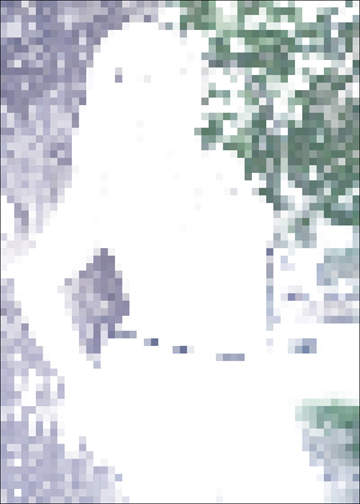
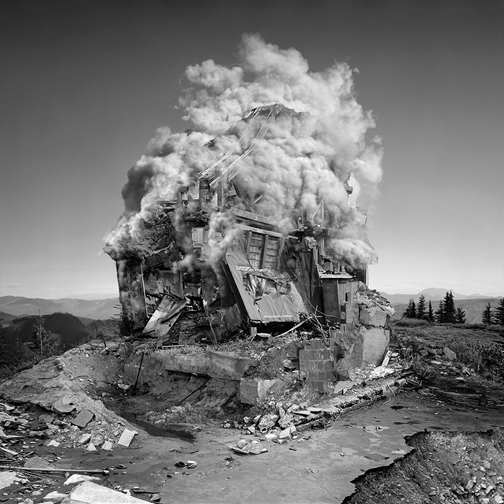 Jim Kazanjian, Untitled (Implosion), Archival Pigment Print, 2009
Jim Kazanjian, Untitled (Implosion), Archival Pigment Print, 2009 Chen Quilin, from the Garden series, 2007. From China Urban at Reed College.
Chen Quilin, from the Garden series, 2007. From China Urban at Reed College.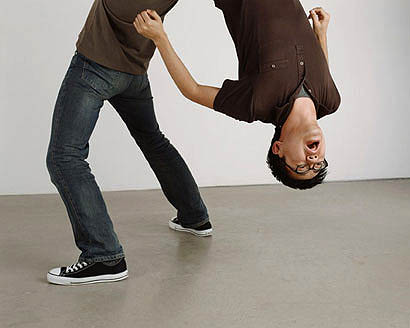
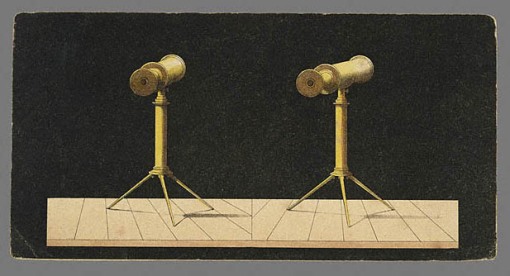 Stereograph Representing a Telescope, anon, c. 1862, from the
Stereograph Representing a Telescope, anon, c. 1862, from the 